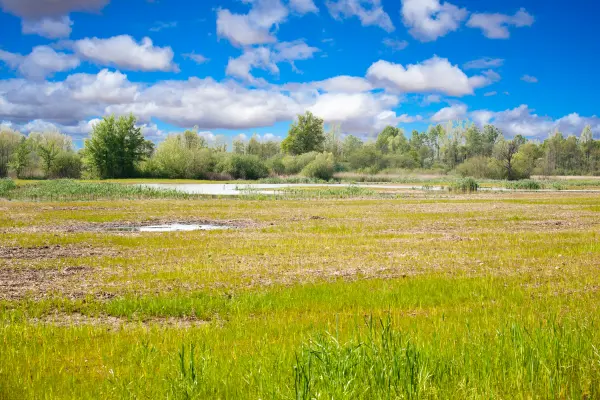- Impact Technologies in built environments address climate change by promoting sustainable living and reducing emissions.
- Key innovations include energy-efficient architecture, resilient urban planning, and waste management systems for a circular economy.
- The goal is to harmonize sustainability with aesthetics, creating nurturing, eco-friendly, and culturally inclusive habitats.
Can today’s buildings pave the way for a sustainable future?
Impact Technologies, pivotal in today’s world, address pressing challenges like climate change and resource scarcity. In the realm of the built environment, they revolutionize how we design and construct spaces, blending sustainability with functionality to forge a future where human progress aligns with ecological well-being.
Why Built Environment Innovations are Important in Addressing Climate Change
Innovations in the built environment are crucial in combating climate change. They offer pathways to reduce greenhouse gas emissions and promote sustainable living, aligning urban development with environmental stewardship.
Shelter and Functionality: At its core, the built environment provides shelter against the elements and spaces for work, recreation, and social interaction.
Environmental Impact: Buildings account for a significant portion of global energy consumption and CO2 emissions, primarily due to heating, cooling, and lighting needs.
Urbanization and Population Growth: As the global population surges and urbanization accelerates, the demand for infrastructure, housing, and urban amenities intensifies.
Cultural and Historic Significance: Architectural marvels and heritage sites tell tales of civilizations past, reflecting cultural narratives and historical epochs.
Health and Well-being: The design and quality of our built environment influence our health, mood, and overall well-being, from the air we breathe indoors to the green spaces we can access.
Economic Value: Real estate, infrastructure, and the construction sector are pivotal to economies worldwide, creating jobs and driving growth.
What Does Success in Built Environment Innovations Look Like?
If architects, urban planners, policymakers, construction magnates, and other key players succeed in their mission to create a sustainable built environment, the visage of our future habitats would be transformative.
Sustainable Architecture: The structures of tomorrow would be energy-efficient, incorporating passive solar design, green roofs, and high-performance materials. Renewable energy sources would be integral, making buildings not just consumers but also producers of energy.
Green Urban Planning: Cities would prioritize green spaces, enhancing biodiversity and offering residents solace amidst urban hustle. Infrastructure would be resilient against climate impacts, from rising sea levels to fiercer storms.
Optimized Transportation: Urban layouts would minimize the need for long commutes, integrating public transport, pedestrian pathways, and cycle lanes. Electric vehicle charging points would become commonplace.
Zero Waste Systems: Buildings and urban areas would have waste management systems that promote recycling and minimize landfill contributions, following the principles of a circular economy.
Social Inclusivity: Urban planning would address socio-economic disparities, ensuring affordable housing and equitable access to amenities. Spaces would be designed for accessibility, catering to all, irrespective of physical abilities.
Cultural Preservation with Modernization: While embracing modern architectural advancements, the built environment would also cherish and restore historical landmarks, preserving cultural legacies.
Digital Integration: Smart technologies would seamlessly integrate, with sensors and automation enhancing comfort, safety, and energy efficiency.
Envisioning a Future of Sustainable Harmony
Success in the built environment realm is a vision of harmonizing the old with the new, nature with architecture, and sustainability with aesthetics. The structures we inhabit would not just shield us but nurture us, not just stand tall but breathe, and not just consume resources but preserve and generate them.
In this success lies a world where cities are lung-friendly expanses, homes are sanctuaries of comfort, and every structure stands as a tribute to sustainable innovation. The mission of these players is vast; it’s about laying the foundation for a future that’s not just constructed but conscientiously crafted.











